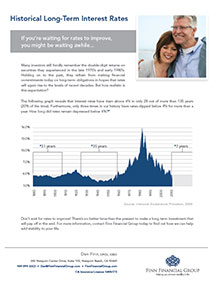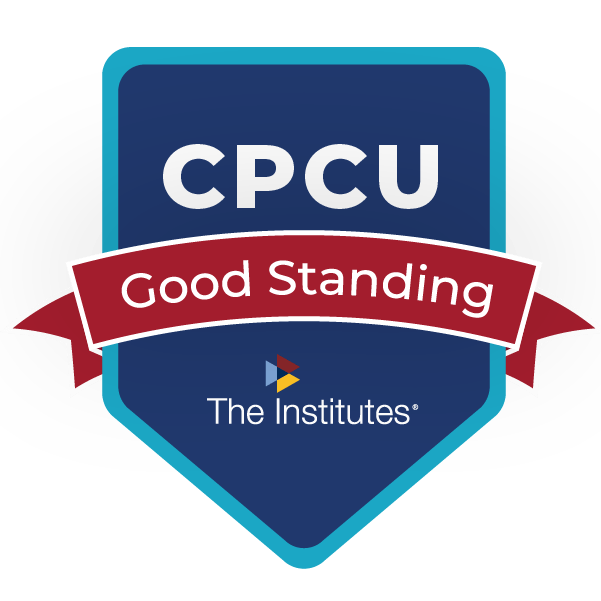Brexit, Stage Left
June 28, 2016– Financial markets like predictability. So when voters in the United Kingdom decided to pull a Snagglepuss by telling the European Union they were going it alone, the financial markets reacted accordingly.
They went barking mad, as it were. 
With the pound sinking to its lowest level against the dollar in more than three decades and the Dow Jones Industrial Average (DJIA) losing 900 points in the first two days of trading, we’re surely a long way from predictability.
But like every calamity before this one since the beginning of time, calm will some day return leaving more than a few winners and losers in its wake.
Meanwhile, those whose fortunes rely on the direction of marketable securities better stock up (pun intended) on Pepto-Bismol. You’re going to need it even if the market eases up as it has a bit today.
Until then, some answers to questions that may be on your mind.
Are my structured settlements safe?
Yes. Safety and security are hallmarks of structured settlements. Benefits will be paid on time as scheduled. Nothing to worry about.
Won’t the stock market impact my structured settlement payments?
Unless your contract includes a future payments rider linked to a market index, such as Pacific Life’s Indexed-Linked Annuity Payment Adjustment Rider, your benefits will not change. If your contract does contain such a rider, Brexit will not cause your payments to drop.
What about the cash I set aside?
It depends on what you’re invested in. When settling an injury claim, many people hold back some cash in hopes they can “do better” than the structured settlement options they’re presented with. But the higher returns they seek aren’t possible without assuming a higher degree of risk.
If you invested in stocks, conventional wisdom says you’ll probably do OK if you don’t panic and have enough time to ride out the volatility. Meanwhile, ignore that grumbling in your stomach.
I’m an attorney and recently structured my fees. Should I worry?
Not because of Brexit, that’s for sure. In fact, you’ll probably win bragging rights around the bar association table since the effective rate of return for the structure you chose likely dwarfed anything the market could have done for you anyway. Minus the market risk!
Depending on assumptions about present and future tax brackets, some of our clients estimate they “earned” effective rates of return in excess of 10% because of the tax deferral. You made a very smart move.
Is it too late to get an annuity?
No. While structured settlement annuities must be chosen before the settlement concludes, a variety of others annuities are available for direct purchase. So if you’ve already taken some of your settlement in cash and are having second thoughts about investing on your own, an income annuity might be a good choice.
Cheerio!
So, mates, best of British to you ignoring those collywobbles until the markets are hunky-dory once again.
Posted: June 28, 2016 | Category: Articles, Blog, Retirement, Structured Settlements | Comments Off on Brexit, Stage Left
Fast Annuity Stats
 June 13, 2016 – Some quick statistics we singled out from among the Key Findings of the 2013 Survey of Owners of Individual Annuity Contracts, conducted jointly by The Gallup Organization and Matthew Greenwald & Associates for The Committee of Annuity Insurers:
June 13, 2016 – Some quick statistics we singled out from among the Key Findings of the 2013 Survey of Owners of Individual Annuity Contracts, conducted jointly by The Gallup Organization and Matthew Greenwald & Associates for The Committee of Annuity Insurers:
When Do People First Buy Annuities?
47% purchased between age 50-64
38% purchased before age 50
14% purchased at age 65 or older
Who Owns Annuities? (By Gender)
51% Female
49% Male
Who Owns Annuities? (By Occupation)
12% Support Staff
14% Blue Collar or Service Worker
15% Foreman or Manager
15% Business Owner or Company Officer
34% Professional, such as, Doctor, Lawyer, or Teacher
Reasons for Purchasing Annuities?
90% view as a “safe purchase”
How Long Do People Keep Their Annuities?
93% still own the first annuity they bought
This last one is especially telling since people tend to hold onto the things they like. For this reason, we think your time would be well spent checking out the full survey to see how your peers go about making their retirement choices.
It’s one thing to see a television commercial about the prospective benefits of annuities in the retirement planning abstract.
Quite another to see how people who have already taken the annuity plunge truly feel about their decisions.
With a 90% chance of feeling “safe” and a 93% chance of feeling “satisfied” with an annuity purchase, odds are good you, too, can benefit from dedicating a portion of your retirement savings toward an annuity.
NOTE: The referenced survey is limited to individual annuity owners who purchased their own individual annuities using non-qualified (i.e after-tax) funds. Structured settlement annuity recipients ARE NOT counted among this pool of survey respondents.
Posted: June 13, 2016 | Category: Articles, Blog, Retirement | Comments Off on Fast Annuity Stats
Retirement Surprise
April 20, 2016 – “Lynn” called me recently for help with a few structured settlement annuities I helped place on her behalf about five years ago.
Our firm occasionally fields calls from former clients who are moving, changing beneficiaries or banks and simply need help submitting the correct documents to make sure their money arrives on time as scheduled.
I always enjoy these exchanges because I get great feedback on the client’s structured settlement or retirement annuity experience several years removed from their decision.
Back in 2011, Lynn chose to structure a portion of her automobile accident claim settlement as it was resolving. Still working at the time, she liked the idea of deferring some of her settlement proceeds into future guaranteed tax-free income designed to coincide with her planned retirement a few years down the road.
With retirement now just a few weeks away and her first annuity payments scheduled to begin, she needed to fill out the appropriate EFT forms so her funds could be automatically deposited into her chosen bank so her pension and structured settlement cash flows would be properly aligned.
One of the questions on the standard EFT form had to do with tax withholding. She wasn’t sure which box to check when asked whether or not to withhold taxes having completely forgotten that structured settlement payments are 100% income tax-free when paid as a result of a personal, physical injury.
 When I reminder her of this fact, her response was priceless.
When I reminder her of this fact, her response was priceless.
“YAAAYYYYYYY!” she involuntarily and quite enthusiastically shouted.
Her excitement was contagious and I smiled as she offered all the reasons this was such welcome news:
Combined with her retirement income and Social Security, her combined effective tax rate in retirement would be lower;
It was an empowering sense of freedom and relief from having to pay higher taxes;
With prices increasing, not having to pay taxes on this income would help her money go further.
Her parting sentiment as we were hanging up is the kind of thing that always makes me feel so great about my career choice:
“You absolutely made my year!”
Glad to be of service Lynn. Thanks for sharing. Knowing I played some small part in you looking so forward to a happy retirement makes MY year!
Posted: April 20, 2016 | Category: Articles, Blog, Retirement, Structured Settlements | Comments Off on Retirement Surprise
Indexed Annuity Surge Continues
February 29, 2016 – According to a recent InvestmentNews article citing a LIMRA Secure Retirement Institute report, 2015 saw a 13% increase in indexed annuity purchases over the prior year to a record $54.5 billion.
To put this figure into perspective, Starbucks’ Fiscal 2015 Annual Report indicates $54.5 billion is just $3 billion MORE than the coffee giant’s total net revenues . . . SINCE 2012!
When was the last time you saw a Starbucks where someone wasn’t waiting in line?
Not that there’s any direct correlation between retirement income distribution planning and the caffeinated brew but it speaks to the ongoing (and growing!) popularity of both and there are some similarities:
Both are optional purchases people make daily.
Each can be tailored to individual preference.
Consumers enjoy the end result despite any long line anxiety (or, in the case of annuities, the application process).
Case Study
(NOTE: For compliance purposes, this case study is a hypothetical example presented for educational purposes only)
Consider the 60 year-old freelance consultant, still in demand, who plans to work another ten years in order to maximize his Social Security benefits.
He has no pension.
Still reeling from the aftereffects of the Great Recession, his greatest fear is losing his remaining accumulated wealth so he simply “parks” the bulk of his funds in a safe, guaranteed account, currently paying about 3.0% a year.
The Dilemma: With ten years to go before he plans to start drawing this down to live off of, how does he earn a higher return without sacrificing safety?
The Solution: Dedicating a portion of his portfolio to an Indexed Annuity from a highly rated carrier with a Guaranteed Lifetime Income Benefit (GLIB) Rider that does this:
A. Guarantees his account will be credited 7.0% per year until he chooses to start drawing it down.
B. Guarantees he will then receive 5.4% of the accumulated value for as long as he lives.
C. Guarantees he’ll never lose a penny.
All things considered – safety, security, guarantee, risk, capital preservation, legacy and life expectancy among them – this solution complements his retirement income planning strategy nicely since only Social Security, pensions and annuities can guarantee income for life.
Indexed annuities, like coffee, aren’t for everyone.
But they are undeniably an efficient and effective method of distributing a portion of one’s accumulated wealth over a lifetime of unknown duration.
Converting assets to income when one’s work life comes to an end needs to be a top priority for those seeking retirement planning advice.
And indexed annuities can fill that cup nicely.
Image courtesy of Stuart Miles at FreeDigitalPhotos.net
Posted: February 29, 2016 | Category: Articles, Blog, Retirement | Comments Off on Indexed Annuity Surge Continues
I Prefer The Revenant Bear
January 14, 2016 – If you haven’t yet seen The Revenant, I won’t spoil the movie for you by telling you all about it.
But surely you’ve seen the commercials advertising the film which earned Golden Globe Awards for Best Motion Picture, Drama and Best Actor in a Motion Picture, Drama for its star Leonardo DiCaprio and is poised to score big at the Academy Awards having just picked up 12 Oscar nominations.
So you probably know that a ferocious bear somehow figures into the plot.
Having seen the movie (twice) and the gruesome bear scene in all its gory, incredible special effect detail and then thinking about 2016’s stock market gyrations, I couldn’t help wondering if the film represents some kind of twisted cosmic foreshadowing of what investors can expect in the coming year.
If you put any stock (pun intended) into what Societe Generale uber-bear Albert Edwards thinks, the S&P 500 is heading into a period of escalated decline which could see the value of the famous index drop by 75%.
That was not a typo.
Given the choice between what he’s predicting and The Revenant, I think I’d rather face the same bear Leo did than go through an Even Greater Recession with my money exposed this time around.
 Safety First and Sleeping Well
Safety First and Sleeping Well
You know who doesn’t have to worry about whether or not Edwards is right?
People who are locked into certain types of annuities: structured settlement annuities, single premium immediate annuities and fixed indexed annuities (FIA).
Their payments are guaranteed.
Our firm has clients in all three and they aren’t (and won’t) be calling us in a panic if the market bears emerge in full force.
That “ol’ bar” can sniff around their money all he wants and our clients’ guaranteed income checks will arrive in the mailbox (or via EFT deposit) on time as promised.
Temporary Scary Interlude
I remember one call I received in the fall of 2008 from a plaintiff attorney client who regularly structured his attorney fees (and still does).
A few of his structured attorney fees were placed with American General Life whose parent, American International Group (AIG), was among those companies on the brink of collapse.
AIG’s involvement in the credit default swap game (aka house of cards) was probably the most troubling of all the financial institutional failures during that time because a) it should have known better and b) it was a H-U-G-E company whose collapse would lead to ultimate decimation of the entire planet as we knew it.
85 billion Federal Reserve loan dollars and two years later, the AIG disaster was averted and the US taxpayers even made a tidy profit off of its bailout.
IMPORTANT NOTE: It bears (no pun intended) mentioning that American General Life was never at risk. AIG’s woes were caused by its holding company.
American General has been honoring its commitments for over 160 years and maintains a superlative balance sheet with over 90% of its portfolio in cash or fixed income assets of primarily investment grade bonds. The real kind. NO CREDIT DEFAULT SWAPS!
State insurance regulations prevent life companies from taking the kinds of risks that led to the Great Recession and we’re proud to represent this excellent life insurance company. Neither we nor our clients ever had reason to worry about its ability to pay.
I assured my client that his structured attorney fee was safe and that it would continue paying well into the future (which it has and will).
Back to Safety First and Sleeping Well
A Special Needs Trust (SNT) fiduciary told me not long ago that structured settlement payments flowing into the SNTs were the only thing that kept his clients’ accounts viable during the depths of the Great Recession.
This conversation was a timely reminder it’s almost ALWAYS smart for special needs clients settling personal injury claims to consider structuring a good portion of their recovery. SNTs and structured settlements work very well together.
Finally, clients of ours who chose fixed annuities and FIAs for some of their retirement allocations awhile back may have missed out on some of the market gains of recent years. But they’re locked in now and won’t lose anything if Mr. Edwards ends up being right.
(Remind me to talk about the fallacy of averages in a future post)
Don’t Panic But Be Safe
Just because one guy says “the sky is falling” doesn’t mean it’s actually going to happen today or any day soon.
Recessions are regularly occurring events, though, so whether it’s a correction or a catastrophe, the market will definitely drop.
Some day.
Then it will go up again.
Some day.
But since nobody truly knows when either will materialize, if you want to protect yourself from the drops that will inevitably occur, take the time to learn about annuities. They work!
Don’t panic. Just take time to consider where you are, where you want to end up and most important:
Don’t risk money you cannot afford to lose.
Image courtesy of [email protected]
Posted: January 14, 2016 | Category: Articles, Blog, Retirement, Structured Settlements | Comments Off on I Prefer The Revenant Bear
Ziggy’s Wall Street Oddity
 January 12, 2016 – With tributes to the late rock icon David Bowie continuing to pour in across the globe, the debate about which David Bowie song was the greatest will likely rage on for a few weeks at least.
January 12, 2016 – With tributes to the late rock icon David Bowie continuing to pour in across the globe, the debate about which David Bowie song was the greatest will likely rage on for a few weeks at least.
Whether you liked his music or didn’t, one irrefutable truth follows his legend:
David Bowie was a trendsetter.
Not content to follow the musical path of most of his predecessors, he expanded the notion of rock music by combining theatrical elements to his shows and developing concept albums at a time when the industry brass were still universally focused on hit singles.
He foresaw many social changes taking shape long before most as evidenced by his early creation of androgynous characters which bridged the gap between what society considered acceptable then and what it would accommodate years later.
The Rise and Fall of Ziggy Stardust and the Spiders from Mars changed the trajectory of rock music and arguably society as well. In addition to making my personal Top Ten list, “Ziggy Stardust” is generally regarded as one of the best albums of all time by rock critics.
Bowie Bonds
But Wall Street pioneer? Who knew?
Bowie’s trendsetting ways didn’t stop with the world of art and fashion. He was a financial innovator as well.
In 1997, David Bowie became the first to create securities backed by future music royalties. Other artists followed suit all meeting with varying degrees of success.
This WSJ YouTube Video gives a great summary of the story.
So, Rest in Peace Tall Thin Duke. Thank you for ALL your innovations.
Especially your music which lives on.
Image courtesy of David Schrock, an artist and personal friend living in Ft. Lauderdale. The painting is for sale.
Posted: January 12, 2016 | Category: Articles, Blog, Retirement | Comments Off on Ziggy’s Wall Street Oddity
The Next Big Short
January 11, 2016 – I watched the Screen Actors Guild and Golden Globe Awards nominated film The Big Short over the weekend.
The movie made me feel anxious all over again.
Prior to the Great Recession, investors were accustomed to seeing their account values rise and fall with some degree of regularity when exposed to the stock market whether doing so directly or through mutual funds.
Ups and downs notwithstanding, the trend line was always upward.
 “Markets will always have ebbs and flows,” financial professionals reminded us.
“Markets will always have ebbs and flows,” financial professionals reminded us.
But The Big Short only reminded me it was all ebbs back then.
The film brought back all those feelings of dread that I remember feeling when I saw my own 401(k) balance reduced by more than 60%.
Those kinds of wholesale losses were Armageddon-like. And it hurt!
As the movie and this 60 Minutes episode from April, 2009 remind us, this market crash affected EVERYBODY. Even if you didn’t invest in the market yourself, you were affected.
Could It Happen Again?
According to Michael Burry, the protagonist of The Big Short portrayed by Christian Bale and the first to see the housing debacle coming, “we are right back at it.”
That’s right. As unimaginable as it seems, another financial catastrophe could be on the horizon according to this prescient economic trend seer.
Nobody can accurately predict the future, or course. But are you willing to bet against this guy after what he saw coming?
So, go watch The Big Short if you haven’t already to remind yourself how close the financial world came to irreversibly imploding.
(Suggestion: Bring a handful of Tums along with you. You might need them!)
Then, think about your own future and think about how much money you can afford to lose.
Safety First
You know who didn’t lose money during the Great Recession?
People with money in guaranteed accounts or any of the clients I’ve worked with over the past twenty-five years who were receiving or were promised guaranteed income from structured settlements and fixed indexed annuities (FIAs) didn’t lose money.
Market risk is inherent in the stock market.
Market risk is absent in a properly designed structured settlement or FIA retirement annuity.
This doesn’t mean you should never invest in the stock market or you should always choose annuities. As a practical matter, a combination of annuities plus traditional investing often results in the optimal outcome for most people.
But it’s shocking how many people often lose site of one of the cardinal rules of financial decision making:
Don’t risk money you cannot afford to lose
Despite what some who make broad, unflattering statements about them say, life annuities are proven to be the “most cost effective and least risky asset class for generating retirement income for life” and I have met very few people who couldn’t benefit from having guaranteed lifetime income.
Cost effective. Least risky. Sounds like a recipe for happiness to me.
So if you’re ready to settle a personal injury claim, keep whatever cash you think you’ll need in the next few years and whatever you’d be comfortable losing.
Invest that money.
Take the rest and set up a structured settlement to help meet your basic living needs.
If you’re focusing on your retirement assets, try this simple math assuming a typical working life:
W/R, where,
W = Number of years since you started working
R = Number of years until you plan to retire
If the resulting number is less than 1.0, you’ve probably got enough time to weather any storms even if we do enter into an Even Greater Recession.
If the number is 1.0 or greater, watch out! You should give serious consideration to limiting your exposure to the market. The larger the number, the less time you’ll have to make up what you lose if the market tanks again.
BONUS: Paradoxically, by annuitizing a portion of your retirement assets to meet your known cash flow needs, you’ll be able to invest some of your portfolio in the market with less worry.
Everyone needs guaranteed income. Don’t wait until it’s too late to get yours.
Postscript
I plan to vote for Christian Bale when I fill out my Screen Actors Guild Awards ballot in a few weeks. He was that good in his supporting role.
(Disclosure: As you can see from my IMDb profile, it’s been a little while since my network television debut and I remain, quite possibly the most under-exposed professional actor member of the Screen Actors Guild)
But I’m not voting for The Big Short although it was deserving of its SAG Award nomination.
And even if I were a Hollywood Foreign Press Association member, I still wouldn’t have used my Golden Globe Best Comedy or Musical vote on it.
Call me old-fashioned, but I just don’t think there’s anything all that funny about seeing people lose their life’s savings.
Photo courtesy of winnond at FreeDigitalPhotos.net
Posted: January 12, 2016 | Category: Articles, Blog, Retirement, Structured Settlements | Comments Off on The Next Big Short
Fixed-Indexed Annuity Popularity Grows
December 8, 2015 – In both the Retirement and Structured Settlements sections of The Finn Blog, we strive to keep our clients updated on current research and statistics relevant to their retirement and post-injury settlement decision making.
Because we believe people like to make their own decisions about their own lives based on facts, not conjecture, we’re partial to citing verifiable statistics in our posts while steering them away from those with an axe to grind or who otherwise have their own agenda.
Take fixed-indexed annuities (FIAs) for instance, the pros and cons of which are often hotly debated.
Despite attempts by many in the financial planning community-at-large to discredit them completely as unsuitable retirement options “pushed” by licensed agents, FIAs just seem to keep sustaining their popularity according to a recent article appearing in InvestmentNews.
For the statistically oriented among you, you might appreciate knowing FIAs are up 7 percent YTD according to LIMRA Secure Retirement Institute. Here’s a quote from the article:
“Indexed annuity [sic] reached record-breaking levels. Total sales were $14.3 billion, up 22 percent and 10 percent higher than the previous best quarterly results. This growth was driven by many companies, rather than just the top players as we have seen in the past.”
With 179.3 billion dollars worth of annuities changing hands in nine months so far this year, you’d think someone other than those losing market share would be complaining.
What makes these things so popular?
While the intricacies of FIAs can admittedly seem challenging to wrap your arms around, at the end of the day we find a few irrefutable truths about people and retirement which help explain their continued popularity.
Generally
Study after study assures us people generally like the idea of guaranteed income they can never outlive.
Annuities are the only way to contractually guarantee income for life.
People who own annuities tend to live longer on average.
People who own annuities in retirement are happier and show fewer symptoms of depression.
Running out of money, which can’t happen with life annuities, is one of the greatest fears expressed by baby boomers.
Add to all that this truth:
When we compare FIA payout projections to their traditional fixed annuity cousins, we often find the minimum (worst case scenario) guaranteed lifetime benefits from the FIAs are not much different than guaranteed benefits (best-and-only case scenario) of the fixed, non-indexed annuities.
Meaning . . .
Specifically
For about the same amount of money, a FIA offers the potential (emphasis added) for higher payouts than a traditional fixed annuity.
 So if you’re looking into the future and want to guarantee your hard earned money will still be there for as long as you will, look into allocating some of your retirement dollars toward the purchase of a life annuity.
So if you’re looking into the future and want to guarantee your hard earned money will still be there for as long as you will, look into allocating some of your retirement dollars toward the purchase of a life annuity.
If you want the same thing but want to benefit from market increases when they occur, consider a fixed-indexed annuity with a guaranteed lifetime withdrawal benefit rider.
Either way, you’ll be assured that you’ll have cash flow to meet ongoing expenses and won’t have to worry about running out of money.
Let us know if you’d like a Retirement Income Certified Professional® to help you with your retirement analysis.
Image courtesy of bplanet at FreeDigitalPhotos.net.
Posted: December 8, 2015 | Category: Articles, Blog, Retirement | Comments Off on Fixed-Indexed Annuity Popularity Grows
2015 Interest Rates Survey
September 28, 2015 – If you’ve been sitting around waiting for interest rates to rise in a meaningful way sometime soon, a recent report from the Executive Office of the President of the United States might give you an unhappy pause.
Not that a reading of “Long-Term Interest Rates: A Survey,” published July, 2015, predicts anything catastrophic. It simply lays bare a few realities that many people have spent a lot of time trying hard not to accept.
Briefly summarized, the survey reveals:
Rates have been on a long, steady decline for more than a generation.
Nobody really saw this coming.
It’s happening everywhere, not just the United States.
This could be permanent (or close to it).
Experts were wrong before and they’re probably going to be wrong again.
Rates probably aren’t heading too far north anytime soon.
Since a projection of long term interest rates is an important component in developing any Administration’s Presidential budget, this sobering news underscores the importance of setting realistic expectations.
Speaking of Realistic Expectations
 If you’ve been resisting making long term financial commitments with your money out of fear you’d end up with some kind of buyer’s remorse if rates improve dramatically, maybe this survey will reduce your anxiety.
If you’ve been resisting making long term financial commitments with your money out of fear you’d end up with some kind of buyer’s remorse if rates improve dramatically, maybe this survey will reduce your anxiety.
True, it’s not an ultra-rosy projection; however, maybe by tempering your expectations, you can move forward with confidence that you’ll be locking into something that is as good as you can get in the near term.
Structured settlements, with the added benefit of paying cash flows that are income tax-free (physical injury) or tax-deferred (non-physical injury, including attorney fees), remain a preferred settlement alternative despite the persistent “low” interest rate cautions.
Same with retirement annuities. Once you accept that security backed instruments are likely to remain close to status quo for much of the next generation, your incentive to hoard cash lessens.
Nobody wants to buy a TV set the day before it goes on sale. Maybe knowing there won’t be any “sale” on interest rates in the foreseeable future will allow you to move forward more confidently to secure your own future.
Posted: September 28, 2015 | Category: Articles, Blog, Retirement, Structured Settlements | Comments Off on 2015 Interest Rates Survey
When You’re Sixty-Four
 September 14, 2015 – Even some of the staunchest Beatles fans are surprised to learn that one catchy tune from the Sgt. Pepper’s Lonely Hearts Club Band album about reaching a certain age was one of the first songs Paul McCartney ever wrote, by some accounts as early as age 16 when the band was still calling itself The Quarrymen.
September 14, 2015 – Even some of the staunchest Beatles fans are surprised to learn that one catchy tune from the Sgt. Pepper’s Lonely Hearts Club Band album about reaching a certain age was one of the first songs Paul McCartney ever wrote, by some accounts as early as age 16 when the band was still calling itself The Quarrymen.
Give “the cute Beatle” points for looking almost fifty years into the future to ponder love, life and, even if he was doing so unintentionally, joint life expectancy.
Today, married couples probably don’t think enough about joint life expectancy but if they want to make sure their retirement assets last as long as they do, they should.
Fortunately, one “band” that calls itself the Society of Actuaries (SOA) thinks about this kind of thing a lot. These studious lads (and lasses) may never have charted any singles but the work they do is as vital to life as music, if not more so.
In its Phase 1 (of a four-phase project) Baseline July, 2015 research newsletter on “Optimal Retirement Income Solutions in DC Plans,” the SOA authors analyze various retirement income generators (RIGs) with the goal of evaluating the pros and cons of each method to find the optimum solution for ensuring steady cash flow for life.
(Full Disclosure: One of the authors, Dr. Wade Pfau, was one of my professors during my Retirement Income Certified Professional® studies through The American College)
Quotable Highlights
This report is YET ANOTHER in a series of studies we keep finding that points to the advantage of life annuities to meet one’s future income needs.
Here are a few of the highlights we especially liked with our own emphasis added:
“RIGs that pool longevity risk (annuities) provide higher expected lifetime retirement income than investing approaches that self-fund longevity risk.” (p. 8)
“An effective compromise may be retirement income solutions that dedicate a portion of savings to annuities and remaining assets to investing solutions to realize the advantages of both.” (p. 9)
(NOTE: Check out some of our recent newsletters and blog posts. We’ve been advocating this approach for years.)
“Traditional annuities produce higher expected average retirement income than SWP (Standard Withdrawal Plan) strategies due to longevity pooling.” (p. 12)
This last one is worth analyzing a bit further.
The classic “four percent” draw down approach (a common SWP where retirement assets are invested in a mix of stocks and bonds and retirees withdraw four percent of the principal each year to live on hoping what remains will earn enough to allow the money to last a lifetime) has recently been called into question.
So much so than this SOA paper didn’t even consider this approach as an option since prior research “showed this method failed (savings were exhausted) in unfavorable investment scenarios.” (p.14)
Translation: The four percent thing works great when it works. But it doesn’t always work.
Saving the best part of the report for last, it doesn’t get any more straightforward than what the authors concluded about single premium immediate annuities (SPIAs) for a hypothetical sixty-five year old female with $250,000 in retirement assets:
“SPIAs produce highest income with lowest risk” (p. 23)
You’ll Be Older, Too
For married couples, the case for annuities is even more compelling.
Everyone has a statistical probability of living to a certain age. But when that same person marries, the chance that one of them will live beyond their individual life expectancy increases by a significant factor.
NOTE: This calculus also extends to same-sex married couples by the way though it is unknown to what extent outcomes might vary. Additional research is needed.
If continuation of cash flow to a surviving spouse is important to ANY married couple, placing value on these statistical probabilities should be a top priority.
Here’s a quick look at how this plays out for a sixty-four year old married (male, female) couple courtesy of our bean-counting friends at the SOA (individual chances in parentheses):
18% chance one of them will live to age 95 (Man: 6%, Woman: 18%)
If want to see what YOUR OWN chances of living to a certain age will be, Vanguard has a nifty interactive “Plan for a long retirement” tool you might like. It’s a fun (and possibly frightening) exercise.
So whether you’re trying to decide what to do with an anticipated personal injury settlement, a larger-than-usual attorney fee or the current 401(k) balance you’ve managed to accumulate during your working life, I hope this information on life expectancy has given you something to think about.
Posted: September 14, 2015 | Category: Articles, Blog, Newsletter, Retirement, Structured Sales, Structured Settlements | Comments Off on When You’re Sixty-Four



















